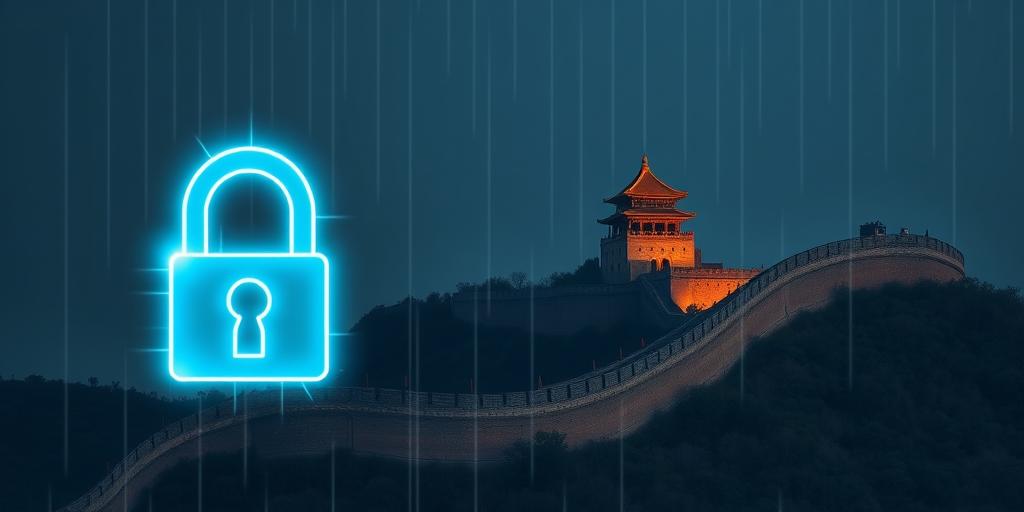The Great Firewall of China: A Deep Dive into its Evolving Tactics
The Great Firewall of China, officially known as the "Golden Shield Project," is a sophisticated censorship and surveillance system that regulates internet access within mainland China. It's more than just a firewall; it's a complex combination of technological measures and administrative regulations designed to control the flow of information, monitor online activity, and suppress dissent. Understanding its mechanisms and evolution is crucial for anyone interested in global internet freedom and the challenges of digital sovereignty.
Historical Context and Development
The project began in 1998 with the initial goal of creating a national internet infrastructure. However, its censorship capabilities were gradually added and refined in the subsequent years. The system gained notoriety in the early 2000s as it began to block access to websites, filter content, and monitor user activity. The name "Great Firewall" is a play on the Great Wall of China, symbolizing its role as a digital barrier.
Key Technologies Employed
The Great Firewall employs a range of technologies to achieve its objectives:
- IP Blocking: Blocking access to specific IP addresses associated with websites deemed undesirable.
- DNS Poisoning: Corrupting DNS (Domain Name System) records to redirect users to incorrect or non-existent websites when they attempt to access blocked domains.
- URL Filtering: Analyzing URLs and blocking access to pages containing specific keywords or patterns.
- Deep Packet Inspection (DPI): Examining the content of data packets as they pass through the network, allowing for the identification and blocking of specific content or protocols.
- Man-in-the-Middle Attacks: Intercepting encrypted connections (HTTPS) to inspect the content of communications. This relies on the use of self-signed certificates, which can be identified by sophisticated users.
- Artificial Intelligence (AI): Increasingly, AI is used to identify and block new circumvention techniques, analyze user behavior, and automatically censor content.
Evolving Tactics and Countermeasures
The Great Firewall is not a static system. It constantly adapts to new circumvention techniques and emerging technologies. Here are some examples of its evolving tactics:
- Blocking VPNs: The Great Firewall actively attempts to identify and block VPN (Virtual Private Network) connections, which are commonly used to bypass censorship.
- Targeting Encrypted Traffic: While initially focusing on unencrypted traffic, the system has become more adept at identifying and blocking encrypted communications.
- Disrupting Cloud Services: The Great Firewall can disrupt access to cloud services that host content deemed undesirable.
Users have also developed countermeasures to evade the Great Firewall, including:
- Using VPNs: Despite the blocking efforts, VPNs remain a popular tool for bypassing censorship.
- Employing Proxy Servers: Proxy servers act as intermediaries, masking the user's IP address and allowing them to access blocked content.
- Utilizing Tor: Tor (The Onion Router) is a network that anonymizes internet traffic by routing it through multiple relays.
- Developing Circumvention Software: Developers create software specifically designed to bypass censorship, such as Psiphon and Lantern.
Impact and Implications
The Great Firewall has a wide-ranging impact on Chinese society, the global internet, and international relations:
- Restricted Access to Information: Limits access to news, educational resources, and diverse perspectives.
- Impact on Businesses: Hinders international business operations and restricts access to global markets.
- Censorship of Social Media: Controls online discourse and suppresses dissent on social media platforms.
- Promotes a Skewed Worldview: By limiting access to outside information, the Great Firewall contributes to a skewed worldview among Chinese citizens.
- Technological Isolation: Can lead to technological isolation and hinder innovation by restricting access to global research and development.
The Future of the Great Firewall
The future of the Great Firewall is uncertain. As technology evolves, both the censorship capabilities and circumvention techniques will continue to advance. The Chinese government is likely to further enhance its control over the internet, while users will continue to seek ways to bypass censorship. The ongoing battle between censorship and internet freedom will shape the future of the internet in China and have implications for the global digital landscape.
Conclusion
The Great Firewall of China represents a significant challenge to internet freedom and the free flow of information. Its sophisticated technologies and evolving tactics demonstrate the lengths to which a government will go to control online activity. Understanding its complexities is crucial for anyone concerned about the future of the internet and the balance between digital sovereignty and global connectivity. As technology advances, the ongoing struggle between censorship and circumvention will continue to shape the digital landscape in China and beyond.









